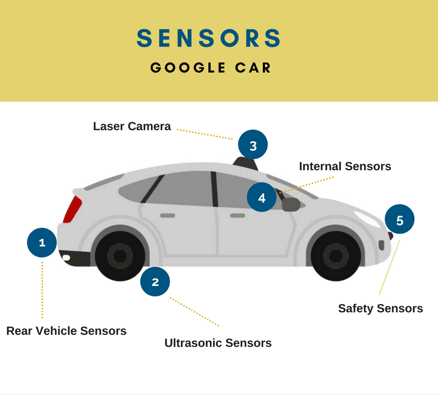The Patent Landscape Analysis (PLA)
Research and Development (R&D) is usually key to the growth of small and mid-sized enterprises (SMEs). Often, the SME has one or more niche products out in the market, with others in the pipeline. However, poor strategic planning of future R&D activities – or worse, none at all – often leads to the demise of SMEs. This can be mitigated, if not avoided, by the use a valuable, but underused tool: the Patent Landscape Analysis (PLA).
A PLA will outline what type of opportunities for growth are available in a certain sector, whether the opportunity lies in a crowded space and who will compete with these opportunities. In addition, the PLA will indicate which countries have high R&D activity, and subsequently, have a high market potential. Perhaps most valuable is the information about emerging technology clusters and sub-clusters in a given sector.
The Autonomous Vehicle (AV) sector
Take for example, the Autonomous Vehicle (AV) sector. A PLA provides a patent filing timeline, which shows a 200 per cent increase in patent filings since between 2009-2015 (data for 2016-2018 is incomplete), spurred by issues of safety, climate change and use of public cars.
With both private and public investments intensifying, it is estimated that there will be 10 million self-driving cars on the road by 2020, along with a projected worldwide $87 billion AV market by 2030. The increase in demand for self-driving cars will provide for new revenue streams. Furthermore, cities will become “smarter” by optimizing traffic, lowering vehicular emissions, along with long-term infrastructure costs.
Not surprisingly, car manufacturers are the top patent filers, with Toyota far ahead of the pack. In fact, Toyota will invest $50 million USD over the next five years researching and developing Artificial Intelligence (AI) applied to self-driving cars. The company has established centers of research at MIT and Stanford.
The top five companies are rounded off by Bosch, Hyundai, Ford and GM. A top-10 patent filer trending upwards is Waymo (which stands for a “way forward in mobility”), a 2016 company spun off from Google. The PLA analysis indicates that overall, Japanese companies lead the world in developing AV technology.

Non-automotive companies are also developing propriety technology in the AV sector. The top three patent filers in this sector are Baidu, Hitachi and IBM, with Uber and Apple in the top 10.
For example, IBM has launched a cloud-based system that uses Natural Processing Language and Machine Learning to develop insights into a large amount of unstructured data, with the goal of integrating this system into future self-driving cars. Baidu, the Chinese web-services giant, plans to mass-produce self-driving cars by 2019.
The top Canadian company in the AV sector is QNX, filing patents in the field of AI to help self-driving cars communicate with each other and surrounding infrastructure.
Technology clusters
The PLA also provides a breakdown of the technology clusters that make up the AV sector. For example, the five main clusters are cruise control technology, safety mechanisms, range systems/sensors, navigation systems and connected vehicles.
In the field of sensors, Google alone has developed proprietary technology for a rotating roof-top camera that uses laser technology; a camera at the front of the vehicle to detect cars, pedestrians, traffic lights and road signs; radar attached to the rear bumper to detect cars approaching from the rear; ultrasonic sensors at the rear wheels to monitor movement; and internal sensors to establish accurate positioning.
Each cluster, in turn, is made up of sub-clusters, which can be further explored to find areas of R&D potential. In addition, the PLA provides a trend analysis as to the growth (or decline) of R&D in a particular technology cluster or sub-cluster. Such a landscape provides valuable information for companies looking to chart a course of R&D in growth markets.
In summary, a Patent Landscape Analysis (PLA) provides a valuable tool for companies to strategically position their R&D towards growth markets. Consult your IP professional to help chart your course of action.

